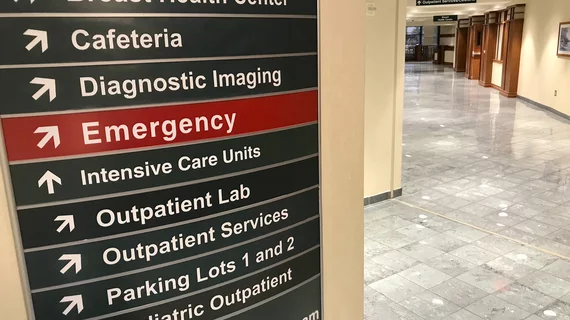Why hospitals suffered financially in 2022—and a look ahead to 2023
Hospitals have been operating in tough conditions this year, with many margins in the red. The healthcare sector has faced strong economic headwinds throughout the year, including higher costs, high inflation rates and a staffing crisis.
The financial struggles among hospitals have been widely documented throughout 2022 in Kaufman Hall’s National Hospital Flash Report, which publishes data sampled from over 800 hospitals from Syntellis' Axiom Comparative Analytics every month.
Health Exec caught up with Erik Swanson, senior vice president of data and analytics at Kaufman Hall, to learn more about the underlying trends throughout 2022 and what hospitals are bracing for in 2023.
Health Exec: The reports have shown a pretty bleak financial reality for hospitals. Can you give me a very broad overview of the overarching trends you’ve seen in the hospital flash reports?
Erik Swanson: 2022 has been a very challenging year for hospitals, who have faced very high expenses driven by labor expenses and worker shortages. The labor shortages in particular have made it very difficult for hospitals to discharge patients in a timely fashion. As a result, hospitals have faced rising costs to take care of patients without commensurate reimbursement. Coupled with a shift away from inpatient care and toward outpatient settings, these trends have helped create a very difficult financial outlook for U.S. hospitals.
HE: What have been the biggest changes in the hospital flash reports throughout the year?
ES: Over the course of 2022, labor shortages have led to a decrease in the proportion of full-time employees per adjusted occupied bed, a key measure of staffing resources. In addition, hospitals have seen a large increase in their purchased service expenses, reflecting broader economic headwinds.
HE: Why have hospitals taken such a hit on revenue?
ES: While hospital revenues have actually increased in 2022, they have been significantly outpaced by rising expenses. Increasing revenues have been driven by several factors, including higher reimbursement rates from commercial insurers. Hospitals have also been caring for sicker patients, which leads to more revenue but also higher expenses, due to longer hospital stays even as overall discharges have declined.
HE: Let’s talk about the rising expenses noted in the reports. What’s the role of inflation in rising expenses? If not inflation, what is driving higher expenses?
ES: While we can’t quantify exactly how much inflation is driving rising expenses, it’s true that hospital expenses historically rose faster than inflation, which is no longer the case given the current inflationary pressures in the broader economy.
Rising expenses have also been driven by related challenges, including supply chain shortages. And as hospitals treat sicker patients that require more supplies, hospitals are paying higher prices per item for a greater number of overall supplies.
HE: What’s been the impact of the labor market on hospital operating margins in 2022?
ES: Labor shortages are a major driver of poor financial and operational performance for hospitals. These pressures have eased slightly in recent months, and contract labor rates and hospitals’ utilization of contract labor have declined, though they remain far above pre-pandemic levels.
HE: Which of these trends do you expect to continue into 2023?
ES: We anticipate that all of the current financial and operational headwinds hospitals are facing will continue into 2023. Hospitals are currently facing a “tripledemic” of Respiratory Syncytial Virus (RSV), COVID-19, and influenza, which could lead to a very difficult start to 2023, in the same way the Omicron COVID-19 variant sparked rising hospitalizations in early 2022.
HE: KFF recently did an analysis of three major health systems - HCA Healthcare, Tenet Healthcare and Community Health Systems. These three all had higher margins in the last 12 months that pre-pandemic years. Are the financial challenges really more hospital by hospital? Why might some hospital systems be outperforming others?
ES: While we can’t comment on specific organizations, hospitals and health systems with greater scale are often able to reach higher levels of overall performance relative to their peers. In addition, rural and safety net hospitals have been particularly hard hit by the challenges and ongoing effects of the COVID-19 pandemic and its aftermath. Nonprofit hospitals, whose missions are designed to serve their communities’ health needs, have also faced especially intense pressures in recent years.
HE: What’s a trend that will be left behind in 2022?
ES: While outpatient care utilization has skyrocketed in recent years, we are seeing signs that this trend is stabilizing. It’s unlikely that outpatient care use can grow indefinitely, and the overall market may be reaching a plateau.

